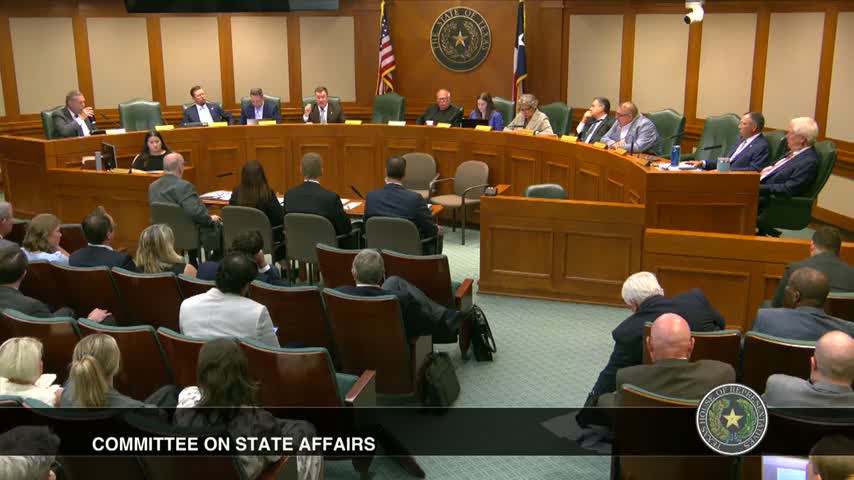Texas officials demand urgent reforms to firefighting communication failures
September 17, 2024 | Committee on State Affairs, HOUSE OF REPRESENTATIVES, Legislative, Texas
This article was created by AI summarizing key points discussed. AI makes mistakes, so for full details and context, please refer to the video of the full meeting. Please report any errors so we can fix them. Report an error »

In a recent government meeting, officials addressed critical communication failures that hindered Texas's response to wildfires, emphasizing the need for improved coordination among agencies. The discussions highlighted that a lack of effective communication from top to bottom exacerbated the challenges faced during emergencies, particularly in the context of federal contracts for firefighting aircraft.
Nim Kidd from the Texas Department of Emergency Management (TDEM) pointed out that Texas does not own any fixed-wing firefighting aircraft, relying instead on federal resources that can be redirected to other states during emergencies. This dependency has led to delays in response times, as seen in recent wildfire incidents where aircraft were not available when needed. Kidd advocated for the state to establish its own contracts for firefighting aircraft to ensure timely access during crises.
The meeting also revealed that the failure to make timely resource calls contributed to the escalation of wildfires. Officials noted that the responsibility for initiating these calls lies with the Texas Forest Service, but confusion over who should act led to delays. Recommendations were made to streamline the decision-making process, suggesting that the Texas Department of Emergency Management should take the lead in such situations.
Additionally, the discussion touched on the need for better interoperability among communication systems used by first responders. Kidd highlighted that current systems often lack the capability to connect seamlessly, which can hinder effective coordination during emergencies. He called for a comprehensive review of communication infrastructure and funding to enhance interoperability across various agencies.
Concerns were also raised about water availability for firefighting, particularly during drought conditions. While no immediate shortages were reported, officials acknowledged that aging infrastructure could pose challenges during large-scale firefighting operations.
Overall, the meeting underscored the urgent need for Texas to reassess its emergency response strategies, improve inter-agency communication, and invest in its own firefighting resources to better manage future disasters.
Nim Kidd from the Texas Department of Emergency Management (TDEM) pointed out that Texas does not own any fixed-wing firefighting aircraft, relying instead on federal resources that can be redirected to other states during emergencies. This dependency has led to delays in response times, as seen in recent wildfire incidents where aircraft were not available when needed. Kidd advocated for the state to establish its own contracts for firefighting aircraft to ensure timely access during crises.
The meeting also revealed that the failure to make timely resource calls contributed to the escalation of wildfires. Officials noted that the responsibility for initiating these calls lies with the Texas Forest Service, but confusion over who should act led to delays. Recommendations were made to streamline the decision-making process, suggesting that the Texas Department of Emergency Management should take the lead in such situations.
Additionally, the discussion touched on the need for better interoperability among communication systems used by first responders. Kidd highlighted that current systems often lack the capability to connect seamlessly, which can hinder effective coordination during emergencies. He called for a comprehensive review of communication infrastructure and funding to enhance interoperability across various agencies.
Concerns were also raised about water availability for firefighting, particularly during drought conditions. While no immediate shortages were reported, officials acknowledged that aging infrastructure could pose challenges during large-scale firefighting operations.
Overall, the meeting underscored the urgent need for Texas to reassess its emergency response strategies, improve inter-agency communication, and invest in its own firefighting resources to better manage future disasters.
View full meeting
This article is based on a recent meeting—watch the full video and explore the complete transcript for deeper insights into the discussion.
View full meeting
